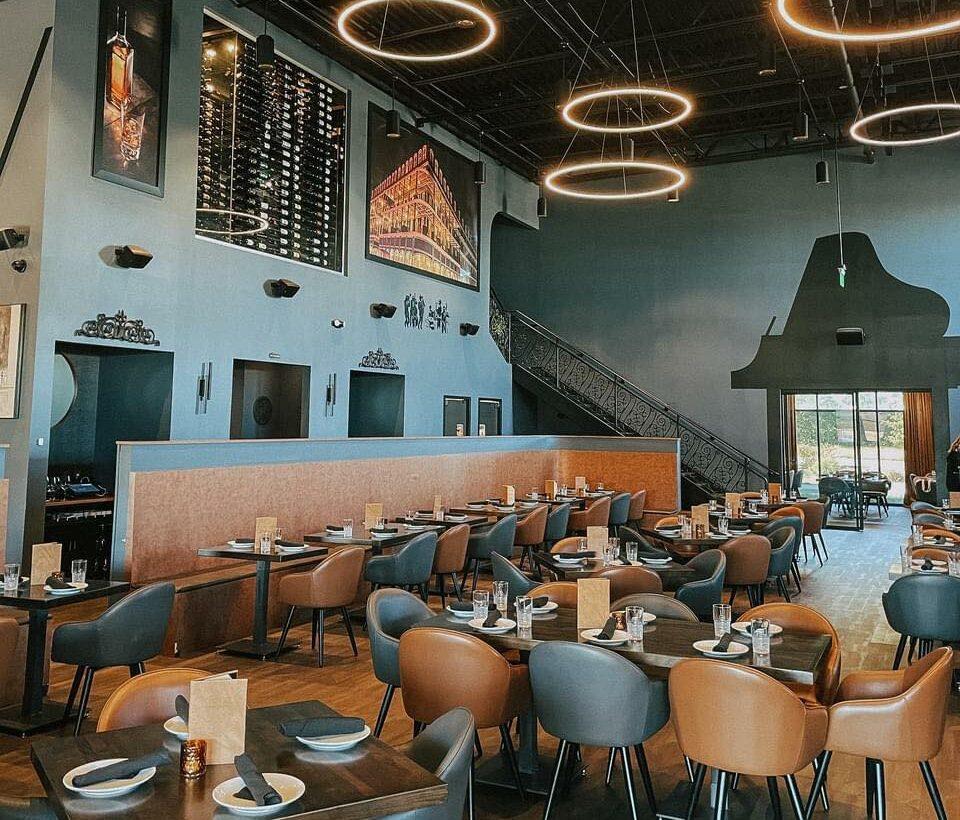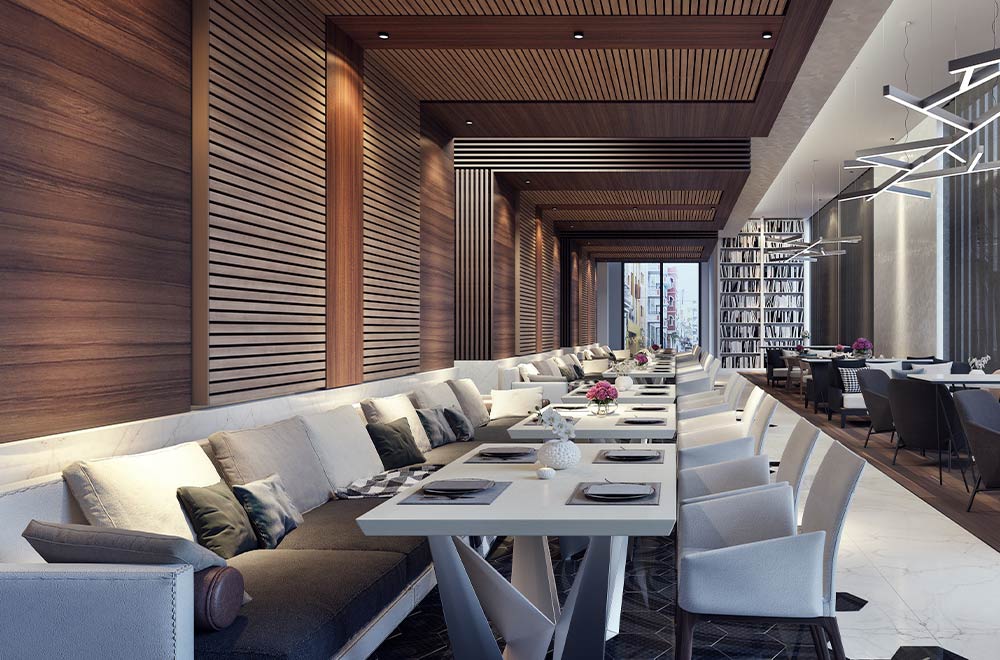Pan Asian Restaurant Islamabad: Discover Exquisite Asian Cuisine
Wiki Article
Savor Authentic Asian Cuisine With a Pan-Asian Spin for a Culinary Journey
Beginning on a culinary journey via authentic Oriental food, boosted with a Pan-Asian twist, uses a special opportunity to explore the rich tapestry of tastes that define the region's varied culinary traditions. As you contemplate these tempting recipes, take into consideration the social stories and historic impacts that shape them, each bite providing a tale waiting to be discovered. pan asian restaurant Islamabad.
Exploring Pan-Asian Flavors
In the realm of worldwide gastronomy, Pan-Asian cuisine sticks out for its impressive variety and the harmonious interplay of flavors from various Oriental societies. This cooking approach celebrates the one-of-a-kind active ingredients and abundant practices found across the continent, creating a tapestry of tastes that is both gratifying and fascinating. Secret to Pan-Asian food is its ability to balance different flavors-- wonderful, salty, spicy, and sour-- while highlighting the quality and quality of each active ingredient.From the umami-rich soy sauce of Japan to the intense chili peppers of Thailand, Pan-Asian cuisine offers a substantial combination of flavors. These elements are typically combined in innovative ways, boosting recipes with layers of intricacy. For example, making use of fragrant natural herbs such as lemongrass and cilantro, common in Vietnamese and Thai cuisine, adds a revitalizing illumination to meals, while the incorporation of coconut milk delivers a luscious, abundant structure.
The focus on fresh produce and aromatic spices guarantees that each dish is not just a banquet for the palate however additionally for the senses. Pan-Asian cuisine invites diners to begin on a cooking trip, discovering the large and varied landscapes of Eastern gastronomy with every bite.
Blend Recipes to Attempt
While Pan-Asian food is commemorated for its conventional flavors, the contemporary cooking landscape is progressively embracing combination dishes that mix these classic aspects with influences from various other regions. This ingenious method not just honors the rich heritage of Asian cookeries yet additionally presents novel preference experiences that appeal to modern palates.
A prime instance of such a combination dish is the Korean-Mexican taco, where marinaded bulgogi beef is wrapped in a warm tortilla, covered with kimchi and a hot gochujang-infused salsa. This combination weds the strong, tasty tastes of Korea with the lively, fresh aspects of Mexican cuisine. Similarly, sushi burritos have actually gained popularity, amalgamating the fragile creativity of Japanese sushi with the passionate, hand-held convenience of a burrito, typically including blend ingredients like tempura shrimp and avocado with a drizzle of wasabi mayo.
Another significant dish is Thai curry ramen, which instills the luscious, aromatic flavors of Thai curry right into the calming brew of traditional Japanese ramen, producing a harmonious mix that entices the senses. These fusion dishes expand beyond simple uniqueness; they stand for a cooking discussion between cultures, motivating exploration and technology worldwide of Pan-Asian cuisine.
Vital Active Ingredients and Seasonings
To truly appreciate Pan-Asian cuisine, one need to recognize the important components and seasonings that create its structure. This varied culinary style draws from an abundant tapestry of Eastern traditions, employing an unified blend of structures Full Report and tastes. Trick components consist of soy sauce, fish sauce, and oyster sauce, which present a savory umami depth important to Eastern dishes. Corresponding to these are rice vinegar and mirin, offering a delicate acidity and sweetness.Fragrant aspects are pivotal, with ginger, lemongrass, and garlic being common throughout numerous Pan-Asian recipes. These active ingredients offer an aromatic base that enhances the intricacy of flavors. Seasonings such as star anise, cardamom, and cinnamon introduce heat and character, resembling influences from areas like China and India.

Food Preparation Methods and Tips
Mastering the art of Pan-Asian food requires experience with its distinctive cooking methods, each adding to the lively tapestry of tastes this culinary custom is commemorated for. Central to these methods is the stir-fry, a rapid food preparation technique that preserves the nutritional stability and vivid colors of ingredients. Using a wok, the stir-fry technique enables for also warm circulation, essential for achieving the characteristic texture and taste equilibrium of Pan-Asian recipes.An additional basic strategy is steaming, specifically widespread in Chinese food. This mild technique preserves the all-natural flavors and nutrients of components, making it optimal for fish and shellfish and veggies. Dumplings, a cherished staple, usually take advantage of steaming, causing soft, delicious textures.
Grilling, also essential, gives great smoky midsts to recipes such as Oriental bulgogi or Japanese yakitori (Chinese food Islamabad). This method typically involves marinating active ingredients, enabling flavors to penetrate deeply prior to cooking over an open flame or warmer
Lastly, mastering the art of stabilizing flavors-- pleasant, sour, salted, bitter, and umami-- is critical. Properly layering these elements can boost a recipe from average to remarkable, using a facility and pleasing cooking experience that personifies the significance of Pan-Asian cuisine.
Eating Experiences Worldwide
Around the world, Pan-Asian cuisine offers an unrivaled eating experience, celebrated for its abundant tapestry of flavors and lively presentations. This cooking sensation has gone beyond cultural borders, catching the hearts and tastes of food fanatics worldwide. In worldwide cities like New York, London, and Sydney, Pan-Asian dining establishments serve as fusions where culinary traditions from Thailand, Japan, China, and past converge, supplying diners with a diverse mix of dishes that highlight the area's diversity.The international allure of Pan-Asian food exists in its capability to supply Go Here both authenticity and technology. Cooks skillfully wed typical ingredients such as lemongrass, soy sauce, and miso with contemporary methods, leading to recipes that are both refreshingly brand-new and acquainted. This blend permits restaurants to start a cooking trip that appreciates heritage while accepting modernity.
In addition, eating experiences are raised with attentively created atmospheres that show the values of Pan-Asian aesthetics. From minimalist Japanese-inspired interiors to dynamic Thai-themed areas, each restaurant provides a distinct ambiance that complements the cooking offerings. Therefore, clients are not simply taking in a meal yet partaking in a social experience, making Pan-Asian dining an absolutely global sensation.
Final Thought
The exploration of Pan-Asian food supplies an extensive understanding of the complex interplay of tastes and culinary traditions across Asia. By welcoming combination dishes such as Thai curry ramen and sushi burritos, the cooking journey not only highlights the flexibility of typical active ingredients however also showcases innovative modern-day strategies. This gastronomic experience, enriched by cooking techniques and necessary flavors, offers a distinct chance to value the multiculturalism and culinary artistry that specify Pan-Asian cuisine on an international scale.Getting started on a culinary trip via authentic Asian food, enhanced with a Pan-Asian spin, provides an one-of-a-kind chance to explore the rich tapestry of flavors that specify the region's diverse cooking practices.In the realm of international gastronomy, Pan-Asian cuisine stands site out for its amazing diversity and the unified interaction of flavors from different Eastern societies. Key to Pan-Asian cuisine is its capability to balance different flavors-- sweet, salty, spicy, and sour-- while highlighting the freshness and high quality of each ingredient.

Report this wiki page